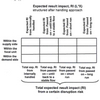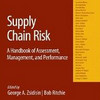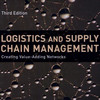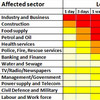 What are the main change and trend drivers for international supply chains? How will future cross-border supply chains look like? That is what Ari Pekka Hameri and Juha Hintsa wrote in Assessing the drivers of change for cross-border supply chains. In a study commissioned by the World Customs Organization in 2006, they sought to identify a set of foreseeable drivers of change and their predicted impact on global supply chain management for the next 20 years. Their findings: supply chains are likely to become even more complex and challenging to manage, which will pave the way for end-to-end integrated service providers in a strongly consolidated logistics market, and thus ultimately lead to an increase in risks and vulnerabilities in international supply chains.
What are the main change and trend drivers for international supply chains? How will future cross-border supply chains look like? That is what Ari Pekka Hameri and Juha Hintsa wrote in Assessing the drivers of change for cross-border supply chains. In a study commissioned by the World Customs Organization in 2006, they sought to identify a set of foreseeable drivers of change and their predicted impact on global supply chain management for the next 20 years. Their findings: supply chains are likely to become even more complex and challenging to manage, which will pave the way for end-to-end integrated service providers in a strongly consolidated logistics market, and thus ultimately lead to an increase in risks and vulnerabilities in international supply chains.
Customs risk? Maybe not.
Last week I reviewed Catherine Truel’s book on customs risk, a book that painted a rather dismal picture of all that can go wrong when trying to comply with customs regulations, but perhaps she may have overrated the importance of customs risks in the quest for discovering new and hidden supply chain trends? It may appear so, if I consider what Ari Pekka Hameri and Juha Hintsa wrote in their article, where customs regulations compliance is not a major driver for future change, but many other issues are more likely to have an impact. Looking back, many of the issues are echoing what were considered hot future topics for logistics and supply chain research at the NOFOMA 2009 conference.
Strategic issues in cross-border supply chains
The research question that Hameri and Hintsa sought to answer were:
Q1. What are the main change drivers for international supply chain management, i.e. key trends and phenomena, which cannot be influenced by decisions from single companies and supply chains?
Q2. What are the main international/cross-border supply chain connection parameters, which are likely to be influenced by the change drivers?
Q3. What are the practical implications of the forseeable changes in the international supply chain parameters, caused by the key change drivers, for the coming ten to 20 years?
Major concerns in cross-border supply chains
An initial literature review revealed 5 major issues:
- supply chain performance and cost cutting
- information sharing and data transparency
- collaboration, partnerships and inter-organizational communication
- globalization and cross-border supply chains with multi-tier structures
- technologies for tracking, protecting and managing cargo flows.
Change drivers in cross-border supply chains
The issues above were used in interviewing 33 experts in the field of international trade and supply chain management, resulting in these 14 drivers (in non-prioritized order) that were expected to shape supply chains in the next 20 years:
1 Business ethics, good corporate citizenship: transparency and regulatory compliance will have ever increasing role in successful operating models for the global companies of the future.
2 Customs regulations compliance: interfaces between different supply chain players and customs administrations are to improve as supply chains become ever more complex and global.
3 Consumer demands and wishes: consumer finances and will finance future suppliers that can best meet their expectations, be it cost, quality and value wise satisfaction.
4 Corporate taxation schemes: the parameters related to taxation in various countries continue to impact component sourcing, factory location and geography related decisions.
5 Energy concerns: the beginning of the new millennium has already indicated that energy sources and prices strongly affect the performance of global supply and delivery processes.
6 Environmental concerns and regulations: Environmental issues with emission quotas will reshape both how supply chains are structured and how companies will seek energy efficient manufacturing and transportation solutions.
7 Global pandemics and natural hazards: potentially devastating pandemics such as avian flu and earthquakes are threats, which have to be considered when planning supply chain structures and contingencies in the future.
8 Information and data management complexities: the apparent increase in supply chain network complexity will challenge information management on a global scale with many players involved.
9 Internet and e-commerce technologies: timely and correct information on operations continues to be the key to efficient supply chain operations, this means that Internet related services and trading platforms will have an ever increasing role in coming decades.
10 Manufacturing and low cost labor: manufacturing companies continue to be driven by scale and lower cost, which continues to change the supply chain structures and makes supply chain management all the more challenging.
11 New technologies for physical operations: various technological means to track, detect and control global material flows will develop further and their application will become commonplace.
12 Raw material concerns: continued global growth has led to a surge in raw material prices and companies exploring and refining natural resources will play a more important role in the global economy.
13 Security concerns and regulations: security issues have gained significant momentum since the events of 9/11. This trend will continue into the future and complementary and dedicated regulatory, (in)voluntary, programs to improve global security will shape the global business environment.
14 Technical trade barriers: governments and economic areas may have increasing incentives to regulate local and/or regional trade in order to control the impact of globalization.
Supply chain parameters
In addition to the 14 change drivers above, the expert panel also documented a set of 44 key supply chain parameters that in their opinion will remain vital for efficient supply chain management within the context of international, cross-border supply chains. These 44 supply chain parameters were linked to the following areas:
- Logistics
- Management
- Manufacturing
- Products
- Regulations
- Security
- Technologies
- Trade
This excerpt taken from the paper shows some of the parameters:
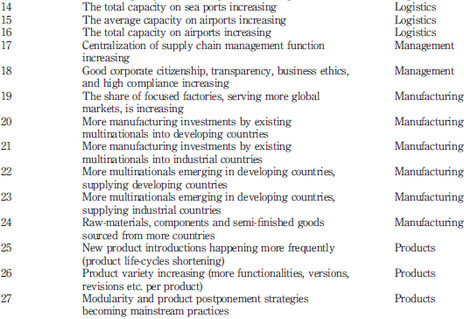
Mapping change drivers and parameters
A panel of 12 experts was then used to map drivers and parameters. Obviously, not all drivers and parameters are valued equally by the panel, and the resulting consensus matrix left 10 drivers and 17 parameters standing, identifying a total of eight important future trends for international supply chains:
The average airport capacity will decrease, because increasing energy prices, mainly oil prices, will decrease the competitiveness of air cargo in the future.
Total trade value and the share of international trade of the total trade will increase, but global pandemics and technical trade barriers may hamper this development.
Consumption per capita in developing countries and in major emerging markets will increase, particularly because of the increase of the middle class in countries like India and China.
Raw-materials, components and semi-finished goods will be sourced from more countries, and companies will continue to expand the geographical regions for sourcing raw-materials and components required in their own manufacturing.
Good corporate citizenship, transparency, business ethics, and high compliance standards will increase, partially due to growing public and governmental concerns in relation to financial accounting, environmental protection, security protection and other management practices of public interest.
The global manufacturing and sourcing landscape will change, as more multinational companies will be created in developing countries themselves, supplying first the developing markets, and then possibly expanding marketing and even manufacturing to industrial countries.
The global logistics management landscape will change, as the consolidation of the logistics industry will continue, and logistics service providers will seek economies of scale to minimize the unit costs and broader service offerings to satisfy the requirements of their global clients.
The technology and security landscapes will change, as international trade, logistics and customs data standards will increase their roles in the future, and as business – government relationships in security management will deepen and many supply chain security technologies will become mature and widely used.
The road ahead
In their final paragraphs, Hameri and Hintsa summarize the most important changes and challenges for tomorrows supply chains:
Companies taking part in international trade and supply chains must be well prepared for the anticipated changes in their future operational environments.
Customer focused reliability indicators such as delivery performance and perfect order fulfillment will be the most important supply chain management metrics.
Manufacturing will become more and more global in nature. New production capacities will be erected both in industrial and developing economies.
Products are becoming more complex from multiple points of view. Following differentiating customer needs and requirements, the number of product versions and stock keeping units will increase. At the same time, product life cycles are becoming shorter, following the intense market competition and customer demand for new products. The need for efficient networking and collaboration, business-to-business and business-to-government, will continue to grow.
Increasing numbers of companies are making profits by focusing on their core competencies, and outsourcing the majority of non-core activities to high performing third party service providers’. Industry consolidation and mergers in domains such as logistics and transportation will continue in the future leading to bigger and more powerful logistics service providers. At the same time, the interest to outsource more and more logistics functions to external service providers will increase within manufacturing and shipping communities, thus driving demand for more complete and integrated logistics service offerings.
Emerging technologies, tools and standards will help companies and governments to better design, manage and control international supply chains and business networks in the future.
The vulnerabilities of international supply chains will increase in the future, driven by various external hazards and risks, lean operational models as well as changes imposed by regulatory countermeasures. Companies are particularly concerned about future disruptions in material supply and transportation, which will have negative impact on just-in-time operations. In supply chain security management, companies will definitely be investing more in supply chain security measures, and business – government relationships in security management will get deeper.
Conclusion
The abstract boldly presents this article as providing a 360 degree view of the future of international supply chain management and the challenges companies will face to compete in the twenty-first century business environment. I think that description holds true, and the article paints a fascinating picture of potentially coming and already emerging trends in supply chains management and logistics operations.
Reference
Hameri, A., & Hintsa, J. (2009). Assessing the drivers of change for cross-border supply chains International Journal of Physical Distribution & Logistics Management, 39 (9), 741-761 DOI: 10.1108/09600030911008184
Author links
- hec.unil.ch: Ari Pekka Hameri
- linkedin.com: Juha Hintsa
Related links
- crorss-border.org: Cross-border Research Association

